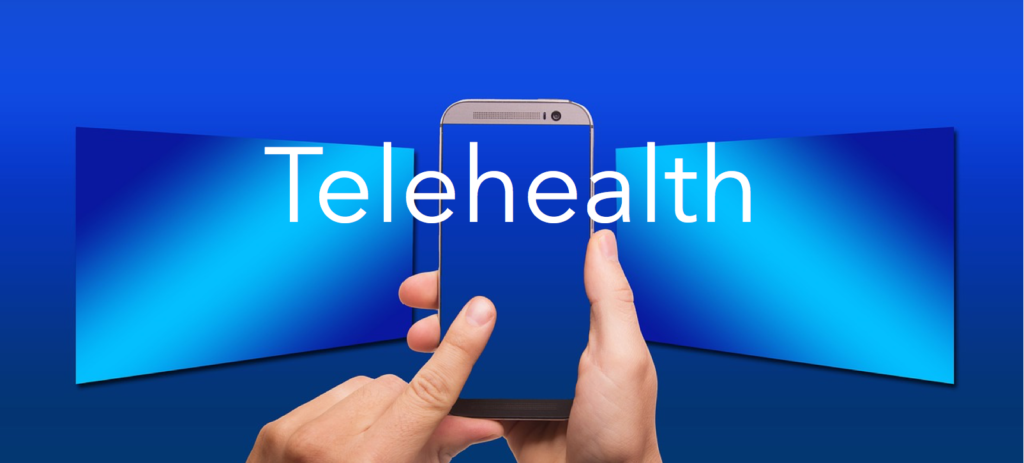The Health Resources and Services Administration (HRSA) of the U.S. Department of Health and Human Services defines telehealth as the “use of electronic information and telecommunications technologies to support and promote long-distance clinical health care, patient, and professional health-related education, public health and health administration”. Technologies include video conferencing, the internet, store-and-forward imaging, streaming media, and wireless communications.
After Dr. Blevins recent post on our Facebook news feed, we thought we’d take a closer look at Telehealth, and its potential to help in the delivery of specialized care, particularly in the rare pituitary disease space. The most obvious benefit is the access to highly trained super-specialists for pituitary patients all over the world. Education would rank a close second, particularly to general endocrinologists who can benefit from collaborations and consultations. The article received several, mainly positive comments, from readers.
This is Dr. Blevins post:
“I accomplished five Telehealth visits yesterday afternoon. The way I figure it, I saved my patients, all of whom live some distance from UCSF, a combined total of about 32 hours of driving …not to mention time parking, on site, the time that someone accompanying the patient to the visit would have to invest, etc. Then, there are the savings in parking fees, the expense of gasoline, wear and tear on an automobile, etc. Add to that the remarkably diminished risk of an accident in traffic! One begins to think these telehealth visits may be a priceless commodity! I will say there is no substitute for a face-to-face meeting but telehealth is, overall, a good thing …and much more beneficial than a phone call.”
Technology in general, used smartly, is an extremely valuable asset to broaden knowledge and awareness of pituitary disease. Telehealth, in particular, makes it easier to provide highly specialized support for people in areas that don’t have access to that care.
Dr. Blevins suggest telemedicine is probably not appropriate for patients that a physician has never seen in order to formally established a doctor-patient relationship. Under certain circumstances, however, it may be appropriate for a Telemedicine visit with a specialist to take place in the patient’s primary physicians or other specialists office. In this setting, the provision of advice, but not direct medical care, would be appropriate.
In this setting, the provision of advice, but not direct medical care, would be appropriate.
As a result of a recent 20 minutes telemedicine visit, Dr. Blevins was able to accomplish what needed to be done with regards to patient care and, at the same time, the patient was spared a 13-hour round-trip, expenses of operating her automobile, parking fees, and expenses of meals and an overnight stay in a hotel.
Telemedicine is probably best suited for patients who live in rural areas or have difficulties with transportation or other circumstances that prohibit them from traveling to their physician’s office.
Clearly, the laws have to change to enable patient to achieve subspecialty follow up care without the need for considerable travel expenses incurred in obtaining that care.
National and local regulations regarding telemedicine are evolving. Reimbursement for Telehealth services varies widely from state to state. California seems to be ahead of most states in accepting, adopting and reimbursing for telehealth visits. Unfortunately, at the present time, at least in the state of California, telemedicine can only be practiced within the state. This doesn’t make much sense. Dr. Blevins relates that he could have a telephone call and discuss relevant medications and changes in therapy with a patient in Colorado and, in effect, accomplish a visit wherein he delivers medical care but there is currently no mechanism to be reimbursed for care provided. Furthermore, under current laws, the provision of care to a patient sitting in Colorado, or some other state, via telephone, is accepted and not frowned upon. Conversely, if Dr. Blevins were to conduct a telemedicine visit with that same patient, for which he could presumably be reimbursed for services provided, it would be considered practicing medicine in a State where he did not hold a medical license! Clearly, the laws have to change to enable patient to achieve subspecialty follow up care without the need for considerable travel expenses incurred in obtaining that care.
This article published in the Wall Street Journal in June 2016 does a great job in laying out the landscape of technology and medicine. Even though it points out many of the positive aspects of telehealth, it also looks at the potential pitfalls and problems. The article mentions that critics worry that such services may be sacrificing quality for convenience. “Consulting a random doctor, patients will never meet, they say, further fragments the health-care system, and even minor issues such as upper respiratory infections can’t be thoroughly evaluated by a doctor who can’t listen to your heart, culture your throat or feel your swollen glands.” …read more here.
Stay tuned to PWN for more technology coverage and news on developments and initiatives that improve knowledge, care, and quality of life.
© 2018 – 2024, J D Faccinetti. All rights reserved.

So australia has some things slightly more advanced than the USA. Our doctors are nationally accredited, it doesnt matter which of our 8 states or territories they work in. And we have been doing tele-health appointments for 5 or 6 years. My current endocrinologist is also the nearest at 300mi away, i have never met him in person in the 3yrs he has seen me. It was a benefit to him my last appointment when he admitted afterv3 years that he has no idea about pituitary problems, especially a familial progressive hypopituitarism, 3yrs and he had not picked up a book, nor consulted with someone, the advantages of teleconference in this case stopped the dialogue becomming physical in nature.